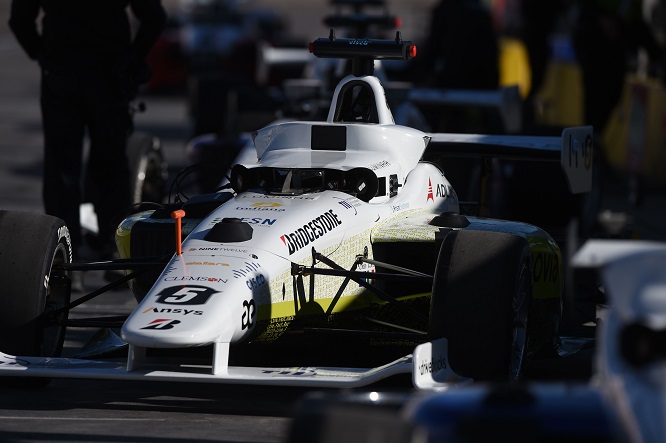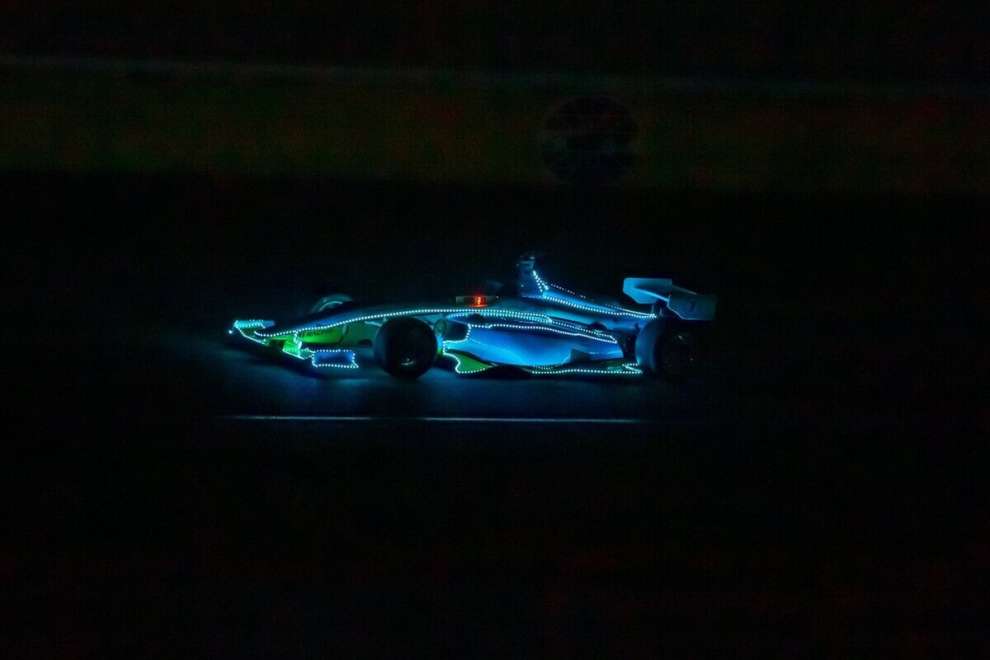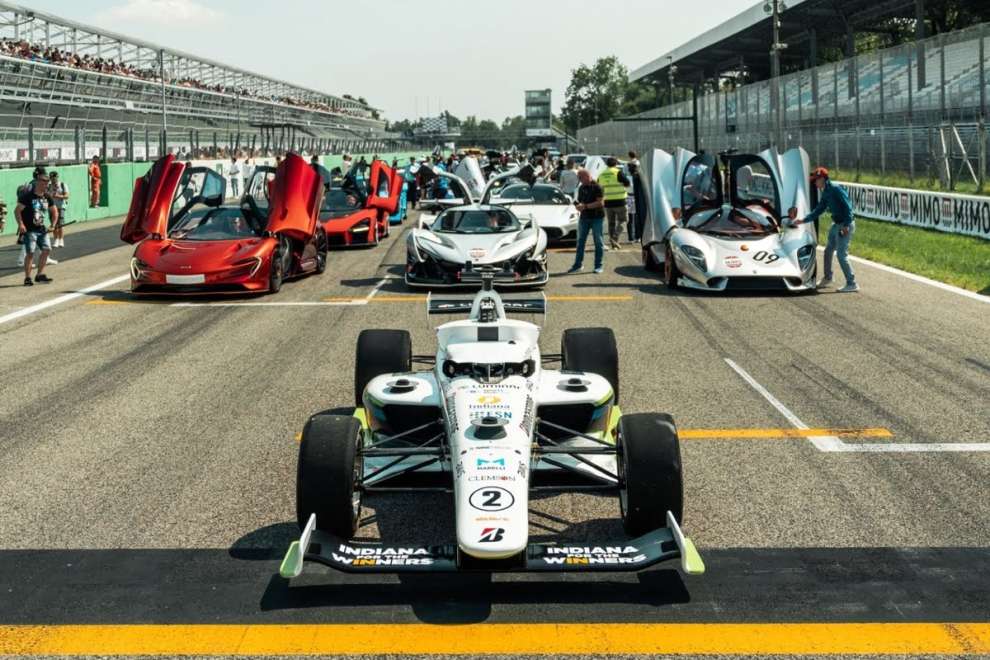By Carlo Platella
2024 promises to be a historic year for self-driving competitions. There Indy Autonomous Challenge, the main circuit in the autonomous motorsport scene, is preparing to take part in the first head-to-head race on a road track, an honor that will fall to Monza. The IAC, however, could be brought forward by the times Abu Dhabi Autonomous Racing League, a nascent category which thus doubles the offer of self-driving races. Behind the scenes of races held without a driver, the human factor is actually present and concrete, with the joint effort of students, researchers and companies to develop new technologies, exactly like in the early days of car racing. We talked about it with Sergio Matteo Savaresi, professor at the Polytechnic of Milan, as well as representative of the PoliMOVE team, the most successful team in the Indy Autonomous Challenge.
Professor Savaresi, what is the picture of autonomous motorsport in 2024?
“Autonomous motorsport today essentially means Indy Autonomous Challenge, the competition that started it. The IAC has played six events so far. The first was at Indianapolis in October 2021, for which there had not been sufficient preparation time, which is why it was simplified to a lap time competition. The first actual race was held in January 2022, featuring the first historic head-to-head challenge event between two cars on the track at the same time, a fully autonomous high-speed duel. Then another similar event was held in Dallas in November of that year and yet another in Las Vegas last January. In June, however, the first race on a non-oval track was held in Monza. The most recent event took place a few days ago again in Las Vegas, but the tone was noticeably lower. This is because three teams, including us who practically won all the races, were forced to use the new standalone package. The chassis and engine are the same, but the entire robotization package, therefore sensors, computers and actuators, has been renewed. Three teams have switched to this new machine, the AV-24but there was practically no competition with the old AV-21s”.
“With the new AV-24s we will contest three important events this year. At the Goodwood Festival in July, we will try to beat the hill climb record for autonomous cars, currently held by the Roborace prototype. In early September, however, the race will take place in Indianapolis, while the Monza event is scheduled for the MIMO. The latter, however, is still a bit uncertain due to the works on the track and could be postponed to October or November. The Indy Autonomous Challenge will conclude its cycle in Las Vegas in January 2025, which will likely mark the epilogue of this initiative. It is not yet clear what will happen next.”
“In addition to the IAC there is the Abu Dhabi Autonomous Racing League, a brand new initiative. It is sponsored by the emirate of Abu Dhabi with government funds. It is an important investment and with a format similar to that of the Indy Autonomous Challenge, from which it takes inspiration with the idea of taking some steps forward. The robotization concept is very similar, but the basic car is different. In the IAC we race with the Indy Light IL15, while the ARL uses the Dallara chassis from the Super Formula, with 550 horsepower Honda 4-cylinder turbo engines. They are very high-performance cars with highly sophisticated aerodynamics, probably the highest after Formula 1. The first race will be held in Abu Dhabi on April 28th, inaugurating a four-year cycle. The intention is to hold at least three races every year, one in Abu Dhabi, one in Europe and one in the Far East, perhaps in Japan or Singapore. The idea is to continue the format, with the ultimate goal of holding a traditional race, with five or six cars on the track at the same time. It's an ambitious goal, since we've already seen how complex it is to manage these autonomous cars, even in a head-to-head between just two cars. It will probably go step by step. In recent weeks the rules for the April race are being defined, when it is plausible that we will already go beyond two cars, evaluating whether to race with three or four at the same time”.
What have been the technological advances in the sector in recent years? Is Artificial Intelligence used in driving algorithms?
“There tends to be confusion about this. The autonomous driving package is always composed of four layers: Motion Control, i.e. the following of the trajectory; localization, therefore scanning of the surrounding environment; Target Tracking, or the perception of obstacles and opponents; Planning, which includes planning the trajectory and the race strategy. With Artificial Intelligence we define convolutional neural networks, which among these four modules, to date it makes sense to use them in the localization and obstacle perception parts. However, it makes no sense to use them in the dynamics part of the vehicle. It's not that it can't be done, but similar results would likely be achieved with much more effort. Even at the Planning level we are not at a complexity that makes its use sensible. We are therefore exploiting Artificial Intelligence, but in two of the four key modules. I don't expect neural networks to be implemented in the Motion Control part in the future, while something could be done in Planning, especially if we race with three or four cars at the same time.”
What is the main limiting factor for the performance of an autonomous car?
“I have to answer the risk. Unlike with city cars, which go slowly, the interesting thing about this type of experimentation is that any mistake leads to disaster, with the car completely disintegrated. As in all motorsport, the challenge is to balance risk with performance. The speeds and the risk are high, so the limiting factor, to date, is finding a level of reliability and trust in the artificial pilot such as to push us closer to the machine's holding limit. Currently we have not managed to exploit the adhesion limit, even if we are not far away, but a human pilot would certainly beat us. The limit is precisely reaching the level of robustness of the human, because in any case the package is subjected to a lot of stress and any micro-error is paid dearly. At those speeds you travel 100 meters in one second: just a minimal localization error and you immediately find yourself against the wall. At 50 km/h then, however, everything becomes more forgivable and you can even stop within a few meters if you notice that something isn't working. I would therefore say that the limit is not technological, but one of robustness and risk management, the same dilemma that pilots face when they have to balance risks and opportunities.”

Does the risk therefore lie above all in the location of the car?
“Location is the basic building block without which the machine wouldn't know where it is and couldn't move. It is a very delicate module. When high-precision GPS works perfectly, the problem is relatively simple. The reality, however, is that this scenario does not always occur. On American oval circuits the GPS holes are small and linked to billboards or passing clouds. In Monza however, the entire section of the Serraglio with the underpass presents serious localization problems with GPS. So we had to do without it, relying solely on cameras, LIDAR and radar. This is a big problem, because at those speeds a small localization error is enough to end up in a wall.”
The main challenge of moving from racing on oval tracks to road circuits is therefore not linked so much to the introduction of braking and traction phases, but rather to the holes in the GPS?
“Both things. If the road circuit were completely open, the localization problem would not exist. American runways, by their nature, are very open and therefore enjoy high visibility from satellite. European routes, on the other hand, have differences in level, tunnels and trees, which is why they are more critical from a localization point of view. It is a problem that does not depend on whether the track is oval or not, but rather on the shape of the circuits. An extreme case would be Monaco, which would probably have satellite coverage on less than half of the track.”
“Obviously then, with road circuits the coupling of lateral and longitudinal dynamics is introduced, also having to accelerate and brake. However, American ovals have other non-trivial critical issues, such as banking management. The very rapid transitions between 0° and 25-30° banking slope represent a complex problem from the point of view of dynamics control. However, this is not something present on our road circuits, where the gradient is a couple of degrees at most.”

In introducing the new robotization package, the AV-24, the Indy Autonomous Challenge placed emphasis on the new long-range 360° LIDAR. What is it about?
“LIDAR is a laser sensor that follows a full 360° scan, with even 30° vertical degrees, taking a full 3D photograph of the environment every 50 ms. LIDARs are evolving rapidly. They are the most expensive, but also the most sophisticated sensors that are used in autonomous driving. The step forward with the AV-24 was notable, in terms of perception times and distance, as well as in the number of layers. The scan point cloud is not continuous, but is as if it were made up of laser slices, which have increased, just as the distance of perception of objects has increased. We were just a few dozen meters away, while now in almost perfect situations we go beyond a hundred meters.”
What is the industry interest in autonomous motorsport in 2024?
“All car manufacturers look carefully at this type of competition, which is a bit of a training ground for evaluating the limits of this technology. As is the strategy of the manufacturers, they are not yet entering directly. The sportiest car manufacturers then look at autonomy with a different eye, since they aim to sell driving experiences. The more traditional brands that do not deal with sports cars, however, are not yet investing in these competitions, nor are they putting their names forward.”

“A few years ago, it was thought that autonomous driving would be introduced in a short time, but in practice it is getting longer. Investments have been slowed down somewhat by the rush to electric, which after the initial hype is now under investigation. This is why interest in autonomous driving is regaining, which is what will enable electrification in new mobility models. It will be an enabling technology. Electric, autonomous driving and sharing are the three macro-trends that will make the difference in the coming years. Depending on the period, one is more popular than the other, with investments going accordingly. In the last 2-3 years the largest investments have been in electric vehicles, while now the focus on autonomous vehicles is on the rise again”.
#Selfdriving #races #Savaresi #limit #risk
